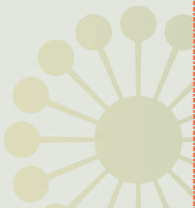ART OF COMPLAINT
October 1994
When Michelangelo painted the Sistine Chapel, he put both the major
prophets and a few of the minor prophets between the lunettes in
the ceiling. Behind each of the prophets are the cherubim bringing
inspiration and vision. One observer has said you can tell the difference
between the major prophets and the minor prophets because only the
major prophets are listening.
We have said that the true artist pays attention to the inner voice,
the illumination of the soul, that draws one into the depths
of his or her own being to acquire “in-spiration” and “in-sight.” This
going within can provide the artist with a rich source of creativity
and ideas that when joined to talent and discipline can occasionally
produce enduring works of art in all its forms.
However, we must also recognize that the source of inspiration and
insight most often lies beyond oneself. It is not only the artist’s
interaction with his or her own psyche that is important, but also
one’s own interaction with one’s environment and culture.
We live in symbiosis; we influence our society even as we are shaped
by our society. Art imitates life and life imitates art.
Much of the criticism being directed against art in our culture today
has nothing to do with technical achievement, but is focused on the
message itself. It is a criticism of the light rather than the object
that is illuminated. This is justified to some extent for even light
is subjective in its tint, its focus, and its intensity. But to find
art offensive because it is controversial, or does not represent my particular
social or family values, or does not make me feel good and
warm all over, is to deny the intent of art itself. If art is not
confrontational it becomes mere decoration. If art is to be a vehicle
of communication it must first command my attention, challenge my
perspectives, and cause me to reexamine my own thinking.
Robert Hughes, in his book The Culture of Complaint, says
that the American taxpayer contributes $0.68 to the support of the
arts every year, compared to $27 in Germany and $32 in France. He
makes the point that where government has supported the arts to such
a great extent, as in Holland where the state has purchased the works
of some 8,000 Dutch artists, so much art was produced that the public
regards 98% of it as junk. (The artists think it’s all junk
except their own work.) His point is that if art isn’t elitist
we could end up with a garbage-disposal problem.
There are millions of volumes of books in the Library of Congress,
many of which should not have been allowed to contribute to the deforestation
of our country. But who is there that should be the judge of what
ideas may circulate? In a democracy that encourages the free flow
of ideas I cannot deny the right of anyone to produce or to purchase
or to be impressed by junk. We all respond to different stimuli and
even the junk is necessary if it established even one link of communication.
More than one city has been built on a garbage heap.
Not everyone will be able to produce great works of art that will
endure and challenge, but everyone ought to be encouraged to try,
and let the market place of culture determine their value.
Dr. Harry L. Serio
|
